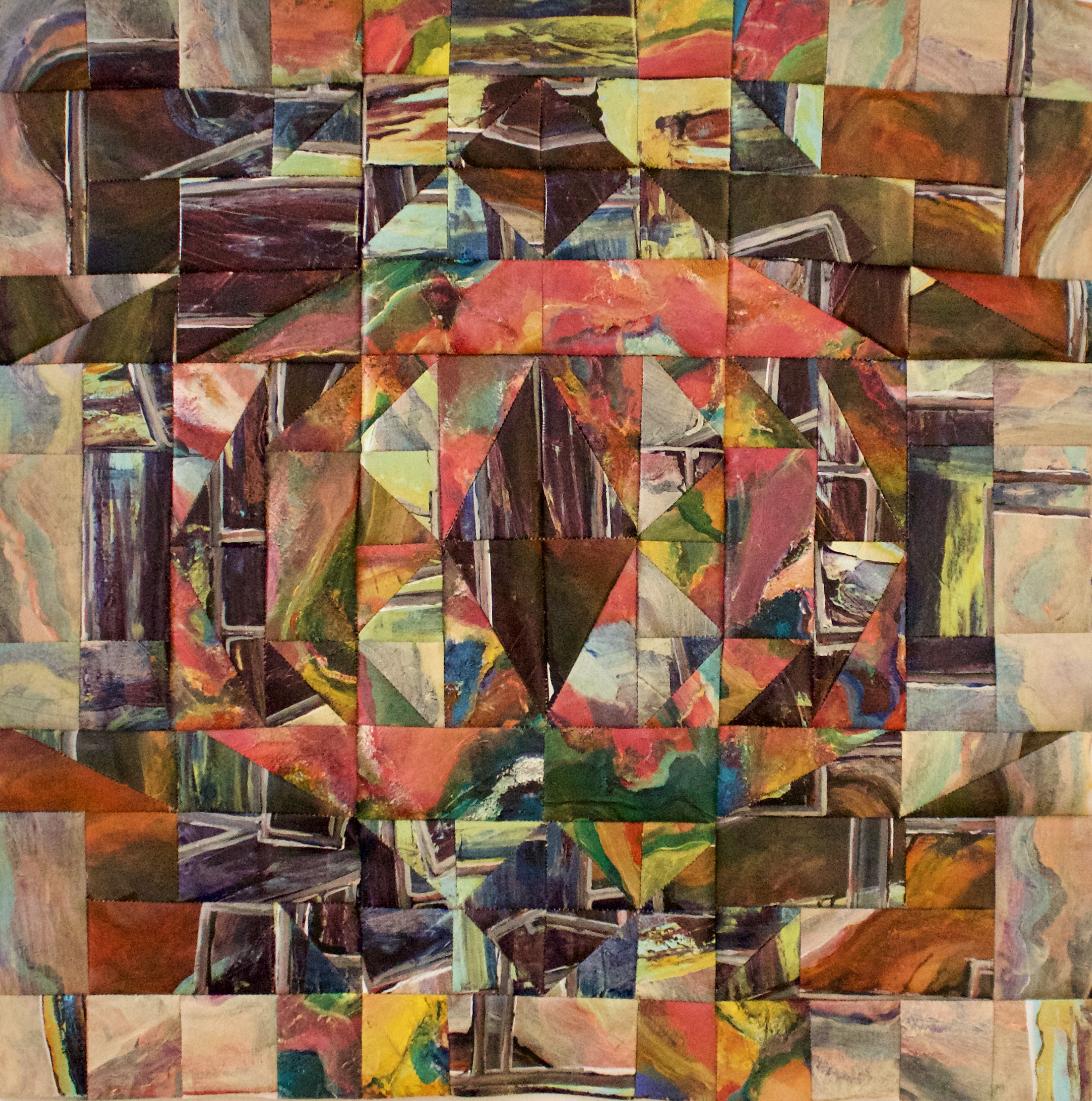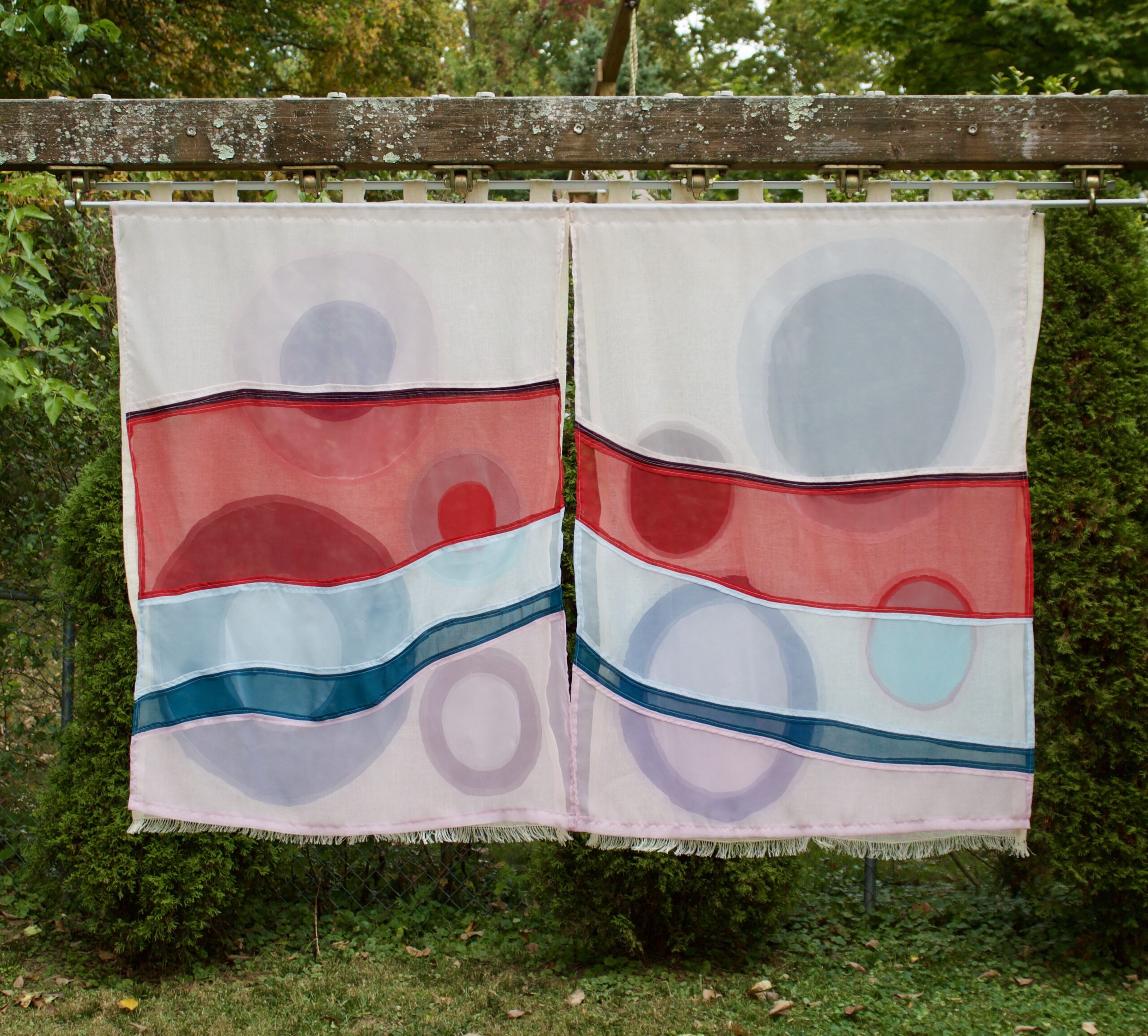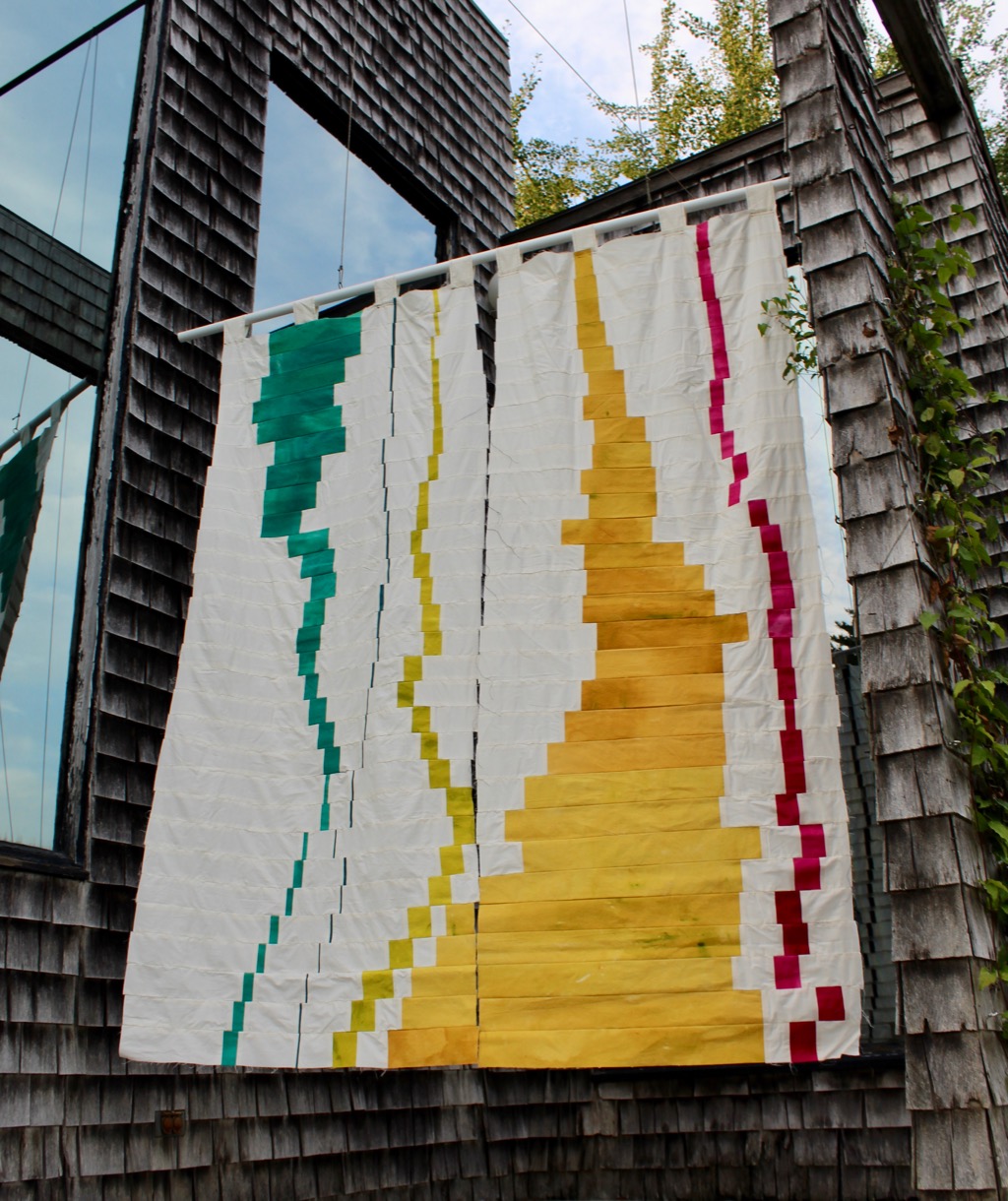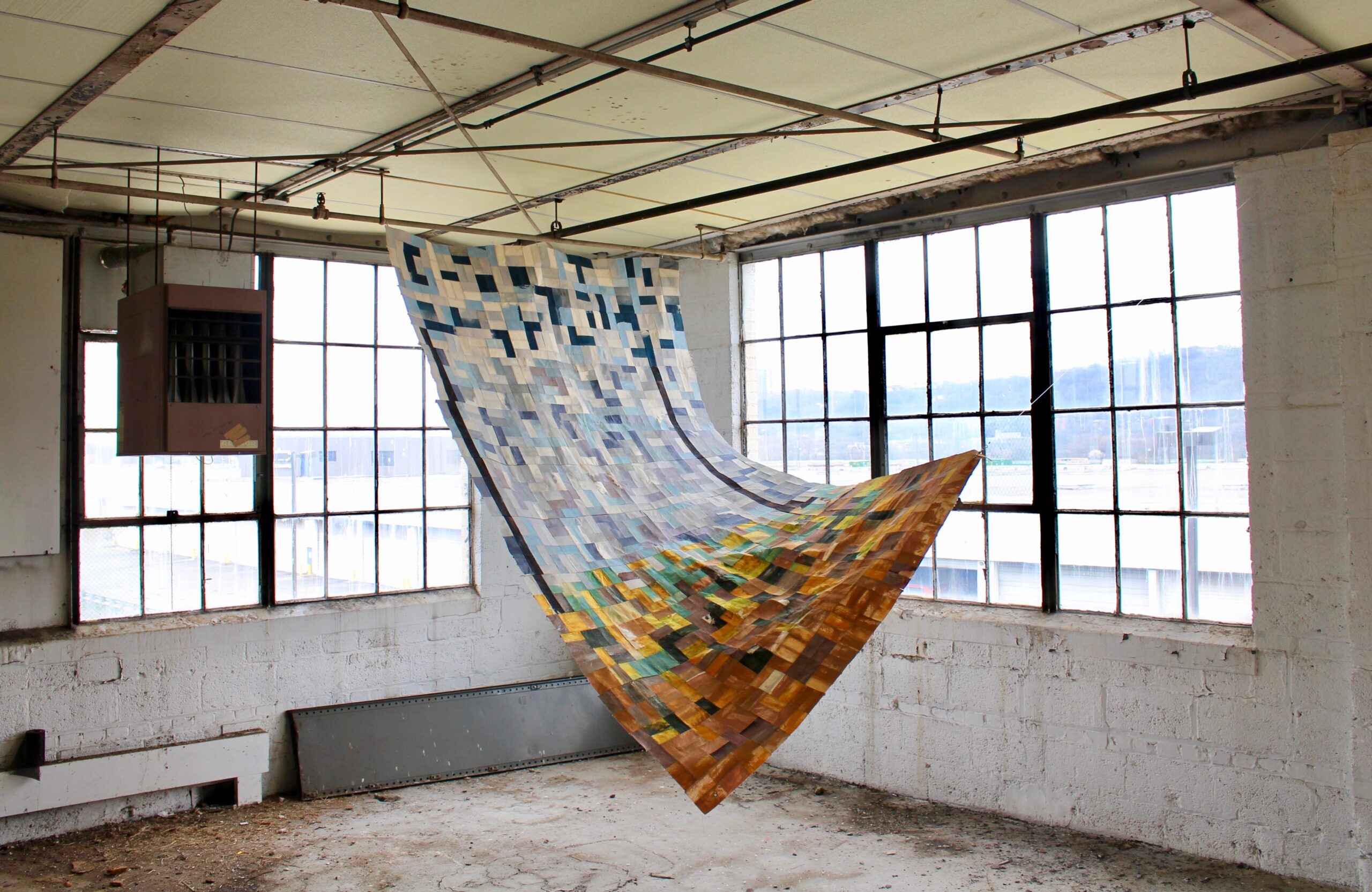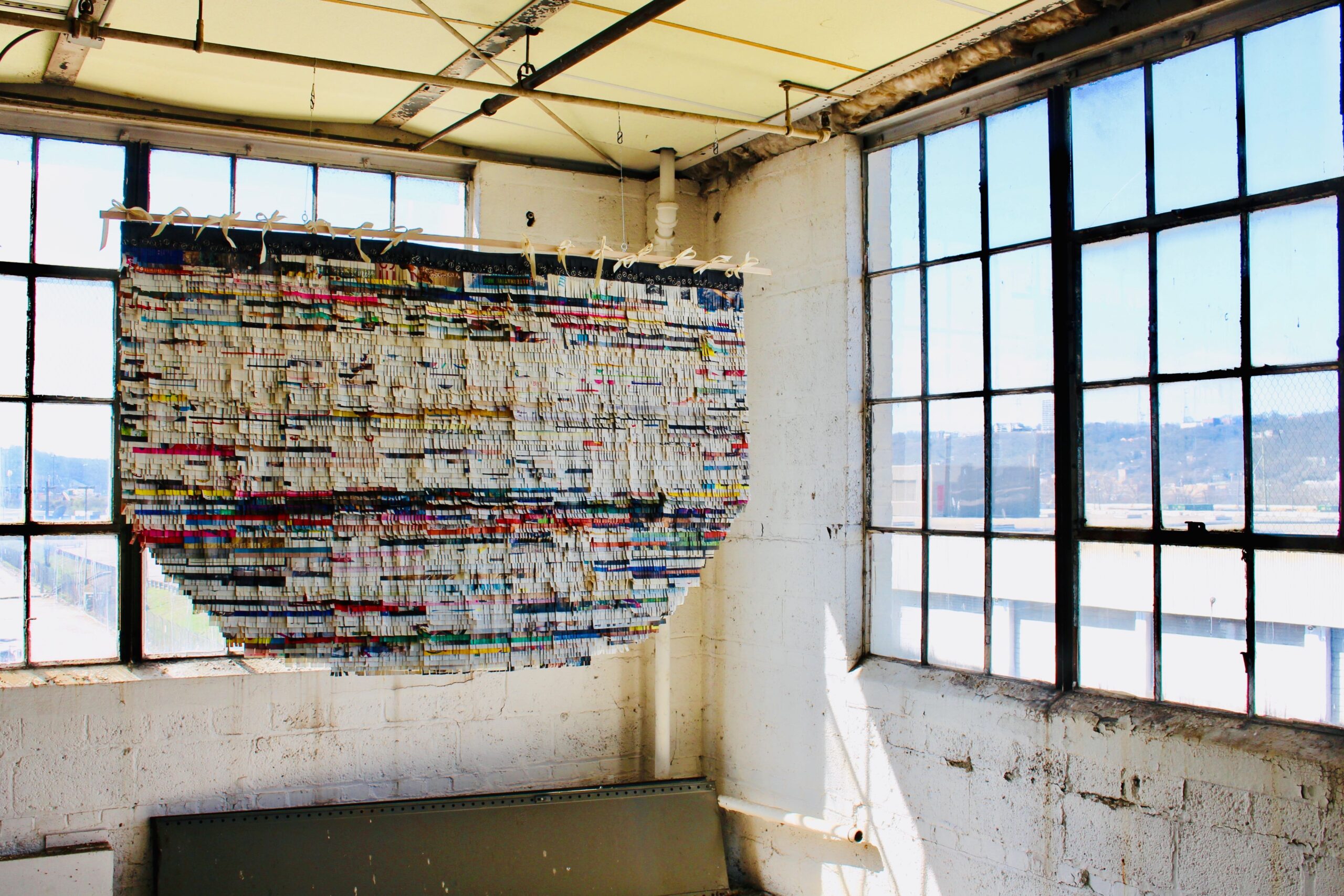Katherine Gibson
she/her
Katherine Gibson
Redistricting, 2020
Acrylic, Canvas, Thread, Brass 28" x 28"
Katherine Gibson
June: Unequal Application, 2020
Fabric, Thread 48" x 72" x 1"
Quarantined Americans began to grow weary of stay at home orders. With no unified messaging coming from the White House, state and community authorities were left alone to enforce and defend their public health mandates. Communities of color were disproportionately affected by the virus, leaving many white and rural communities wondering if we were all over reacting. A rebellion began bubbling up as people stormed statehouses, refusing to wear masks and demanding haircuts. Banal conveniences were conflated with civil rights as effigies of local leaders were hung from trees. Quarantined Americans witnessed police officers murder yet another black American man as video of George Floyd dying circulated on the internet. Protests erupted across the country, spreading beyond our borders and becoming a global call to confront racial inequality. Using data from Ohio we have overlayed how the virus affected different populations over the arrests for breaking stay at home orders in four Ohio metro areas by race. In both sets of data it is clear that communities and people of color are disproportionately affected by both the virus and policing. The bright colors, lack of a key, and transparency of material ask us to consider how our interactions with graphs obscures the human cost the data represents.
Katherine Gibson
April: Flatten the Curve, 2020
Hospital Curtain, Embroidery Thread, Brass 100" x 81"
Much of the country was under quarantine in April. The phrase “flatten the curve” became a national mantra, a goal. Children continued remote learning, those who could worked from home, essential workers faced constant risk and uncertainty. The collective hope was that these actions would stem the precipitous rise in cases, deaths, hospitalizations, occupied ICU beds, and ventilator shortages. Americans held onto the illusion that quarantine would be temporary as they watched the daily statistics crest and then fall during April in parallel with their emotions. The uncertainty was overwhelming as we helplessly monitored the information including that available at https://covid19.healthdata.org/united-states-of-america.
Katherine Gibson
February: Spectator Sport, 2020
Acrylic, Thread, Canvas, Muslin 72" x 96"
In February, confirmed Covid-19 cases were growing at an exponential rate. The graphs and charts were startling. Still operating under an illusion of safety, we in the US continued as if we were protected by imaginary boarders. Checking the news for daily recaps of death and infection across the Pacific brought voyeuristic pleasure. Online discussions about linear vs logarithmic scales erupted as we all became statisticians and epidemiologists from behind the safety of our computer screens. The World Health Organization released daily reports on the total case numbers, new infections, new deaths, total deaths, new recoveries and total recoveries. While a graph may represent data, without a key or scale the numbers are meaningless, morphing into banners for sport.
Katherine Gibson
Away From Prying Eyes, 2020
Acrylic, Canvas, Thread, Brass 132" x 72"
My reuse of materials and adherence to the prescribed patterns inherent in quilt-making are mirrored in the content of the magazines I read in my youth: topics vary little from month to month, the same advice given year after year. While young girls perennially look to teen magazines for guidance and comfort, they instead find troubling and manipulative messages designed to control and curb behaviors in this insidious form of pop propaganda. Within this context, I envision my blankets and cloak as safe spaces of refuge for adolescent girls to create their identities within, hidden out of view. I stitch and weave the fabrics with painstaking care, even while knowing that to trust in the protective power of my quilts is like trusting magazines to raise young women.
Katherine Gibson
Unwearable Cloak, 2019
Canvas, Acrylic, Felt, Thread, Silver, 6 Sassy Magazines 60" x 84"
I created this cloak with a compulsivity mirroring the endless publication of magazines. The recycled articles are themselves upcycled into a delicate fringe that makes no promise of actual protection. Painted and sewn canvas is pieced together like a quilt, hoping to comfort young bodies despite a rough and inflexible weave using textile techniques that women have used for hundreds of years to protect their charges. Laboriously formed pieces of silver sewn along the hem whisper to the wearer a song of protection as they softly jingle, a meaningless gesture that can provide comfort nonetheless. Still, the cloak itself is unwearable, unable to fulfill its implied purpose. The work and time I invested have the unintended benefit of giving me a fictitious sense of safety and control through the performance of physical labor. To trust in the cloak’s protective powers would be like trusting magazines to raise young women. Both offer illusions as we lose our ability to distinguish the real from the imagined, and its only in retrospect that we see where we made our desperate choices to believe.
